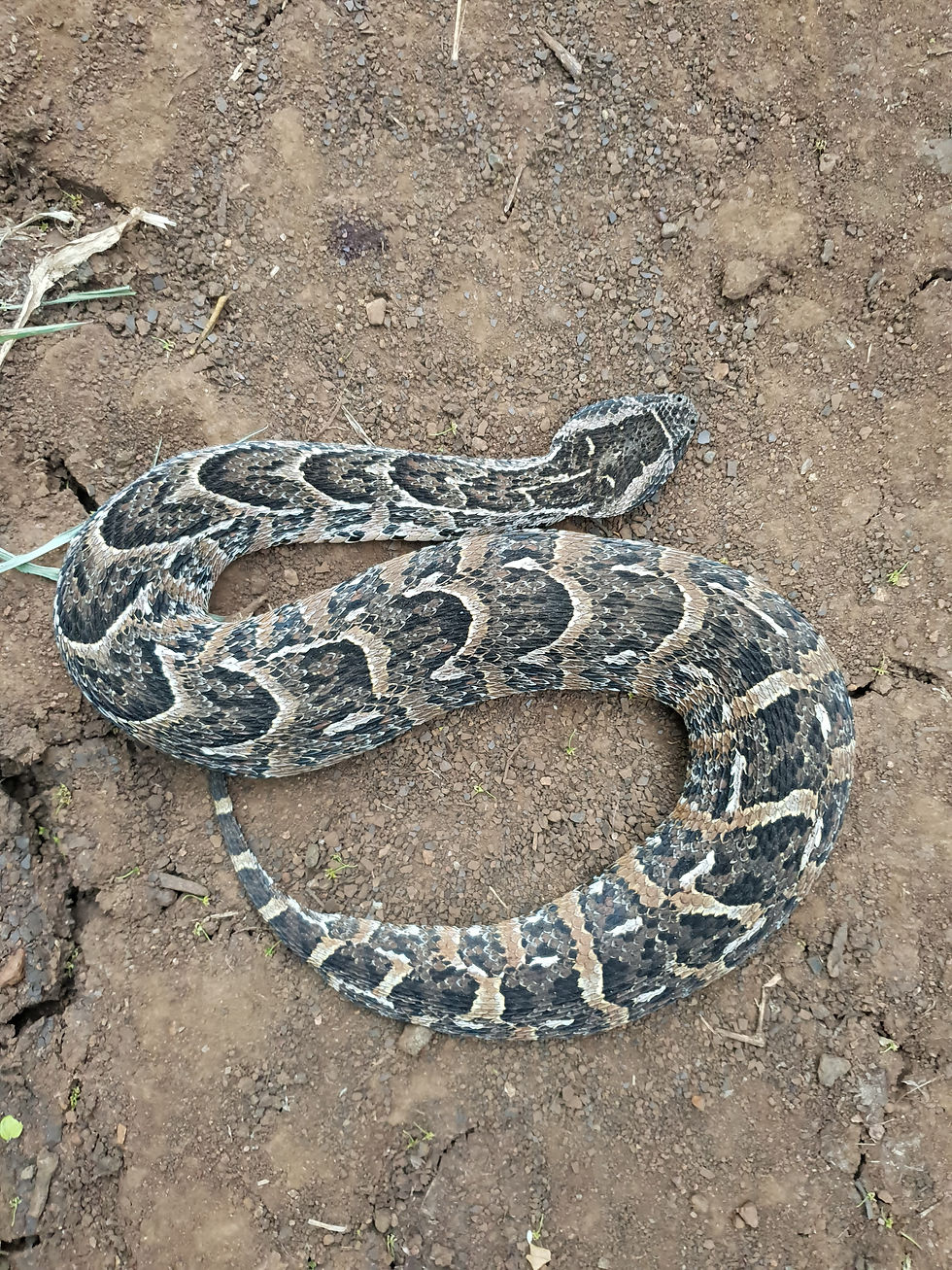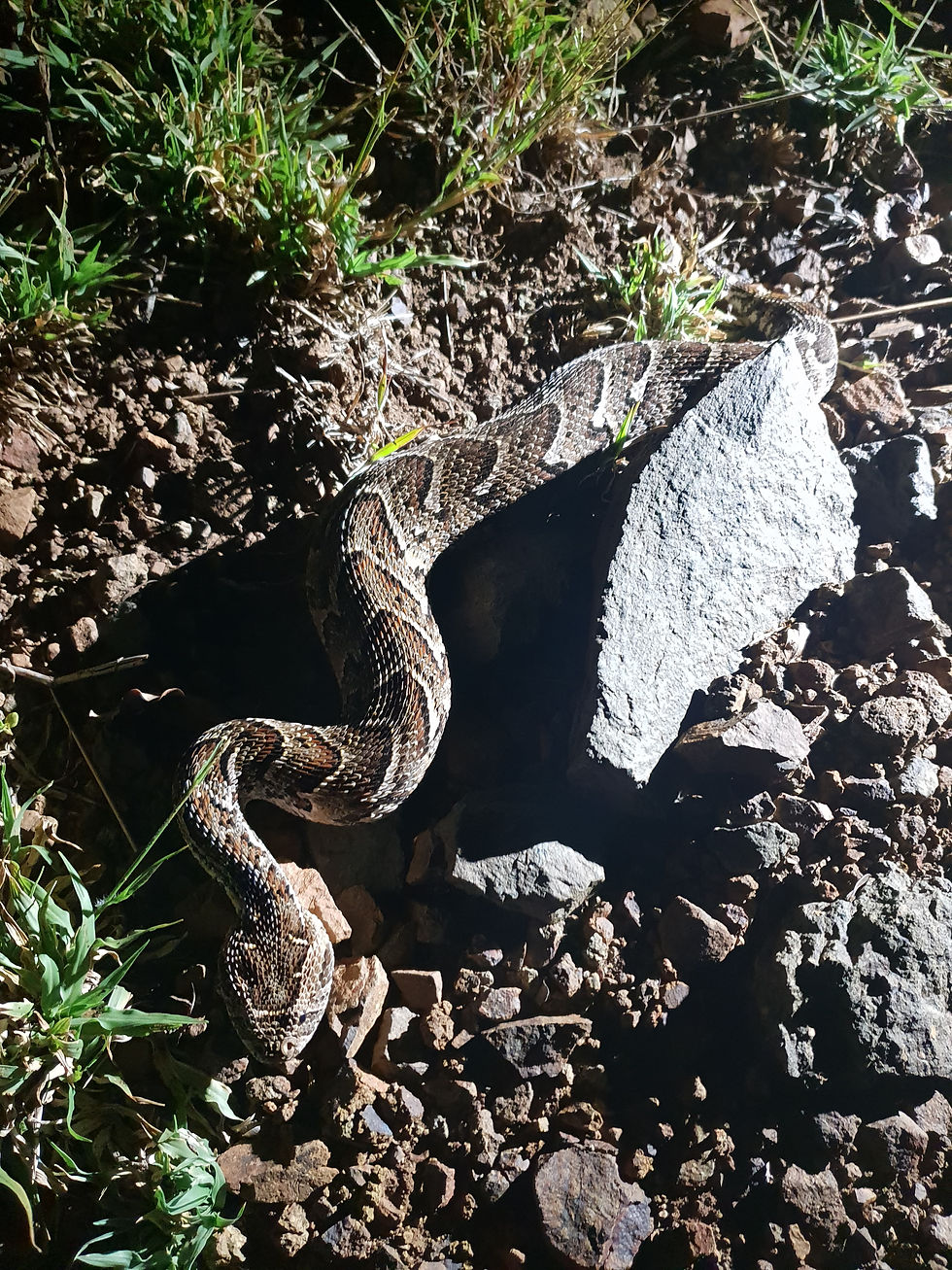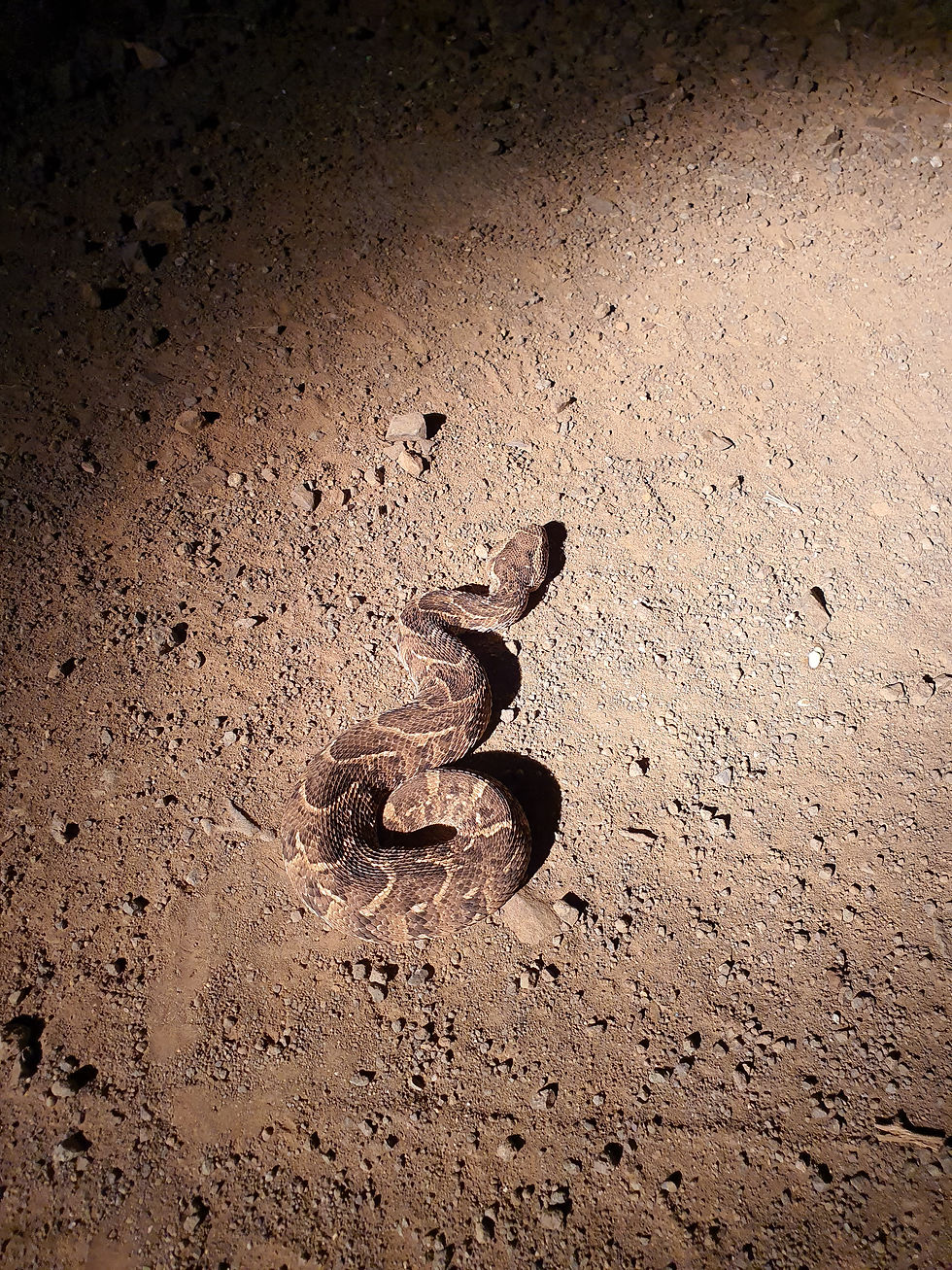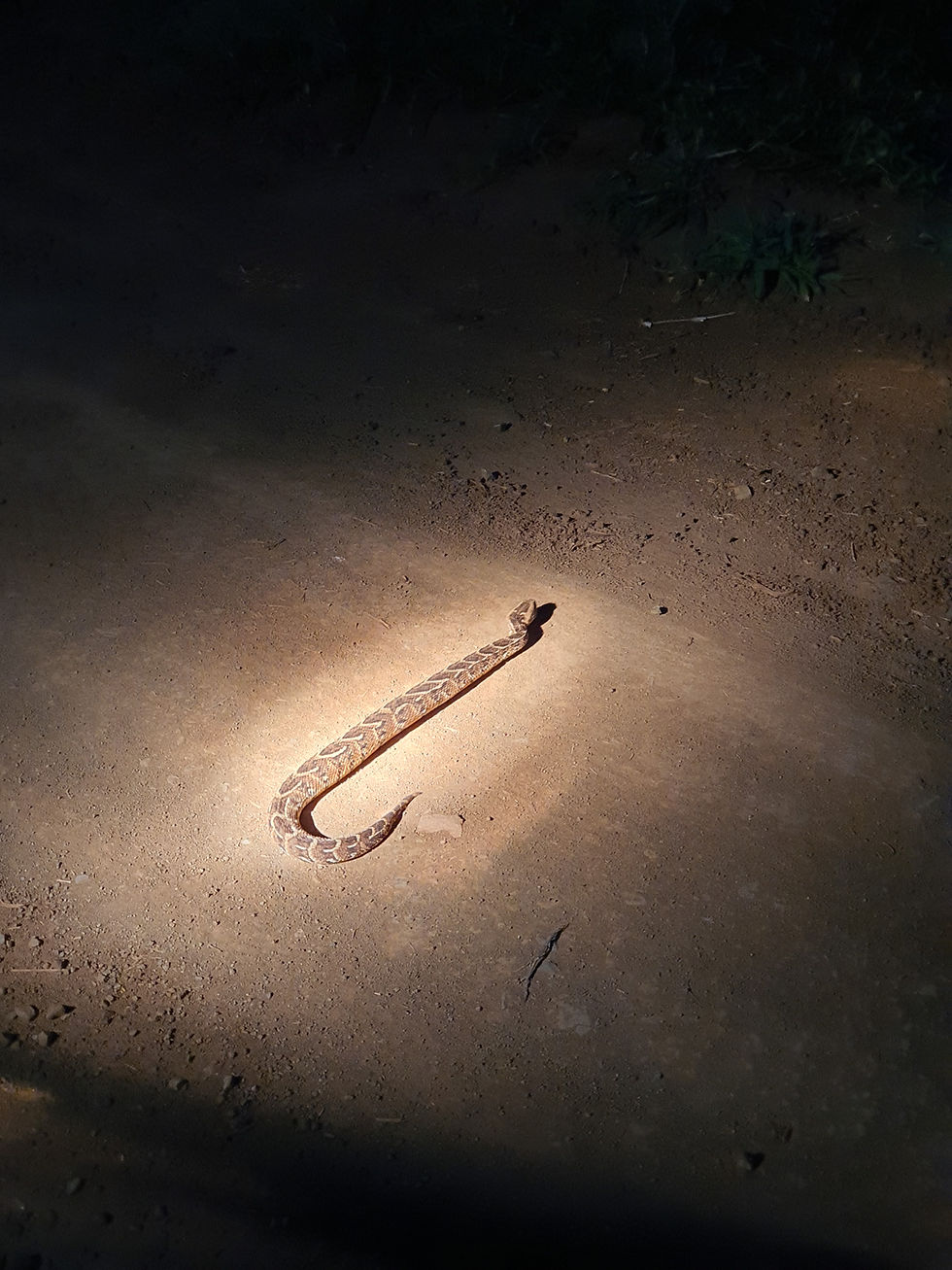Exploring the Puffadder
As we venture into the diverse and captivating world of African wildlife, the Puff Adder (Bitis arietans) emerges as a formidable figure, occupying a unique niche in the continent's ecosystems.
This snake, notorious for its venomous bite and widespread distribution, plays a crucial role in the intricate tapestry of Africa's savannas and grasslands.
A Natural Marvel
The puff adder, also known as the African Puff Adder or Common Puff Adder, is a species that has captured the attention of wildlife enthusiasts and researchers alike.
German naturalist Blasius Merrem first described this species in 1820, giving it the fitting name "arietans", meaning "striking violently" in Latin.

Size and Appearance
Measuring around 1.0 m in total length on average, the Puff Adder boasts a stout build. However, larger specimens have been recorded, reaching up to an impressive 190 cm in total length.
The color patterns of these snakes vary geographically, showcasing an array of hues from straw yellow to reddish brown, often adorned with distinctive chevron - shaped bands.
Masters of Camouflage
Puff Adders have mastered the art of camouflage, blending seamlessly into their rocky grassland habitats. This remarkable skill, coupled with their sluggish yet effective locomotion, allows them to remain hidden from potential predators and unsuspecting prey alike.
Even their unique olfactory crypsis, a mysterious ability thought to be linked to a low metabolic rate, adds another layer to their elusive nature.

Behavior and Habitat
Primarily terrestrial, Puff Adders are adept swimmers and climbers, often found basking in low bushes or even perched high in trees.
When disturbed, these snakes exhibit a defensive posture, coiling tightly and hissing loudly. Their striking speed and agility make them a force to be reckoned with in the wild.
Feeding and Reproduction
Mostly nocturnal hunters, Puff Adders prefer ambushing their prey, which includes mammals, birds, amphibians, and lizards.
Reproduction is a fascinating aspect of their lives, with females emitting pheromones to attract males, leading to intricate neck - wrestling combat dances.
The prolific breeders can give birth to litters exceeding 80 offspring, with one exceptional case involving a Kenyan female delivering a staggering 156 young.

In Captivity
While Puff Adders can thrive in captivity, their disposition is noteworthy.
Some individuals exhibit bad temperaments, hissing and puffing when approached. Their feeding habits in captivity can be tricky, with overindulgence leading to adverse consequences.
The Venomous Reality
Regrettably, the Puff Adder's potent venom has earned it a reputation as one of Africa's deadliest snakes.
With cytotoxic effects and a venom yield of 150 – 350 mg, these snakes pose a significant threat.
In humans, bites can result in severe local and systemic symptoms, ranging from pain and swelling to necrosis and, in extreme cases, fatalities.

Conclusion
As we navigate the intricate world of the Puff Adder, we gain a deeper appreciation for this enigmatic species. Its role as a predator, its remarkable adaptations, and the challenges it poses to those who encounter it make the Puff Adder a true marvel of African wildlife.
Respecting and understanding these creatures is essential for the coexistence of humans and the diverse ecosystems they inhabit.
About The Author
Kyle Grobler is a passionate environmentalist and esteemed field guide from Potchefstroom. With an unparalleled love for nature, he boasts a vast collection of over 40,000 photos, illustrating his particular affinity for birds.
Known by many as the embodiment of a true bushman, Kyle has ventured through various South African game reserves and frequently explores the Vaal River's hidden treasures. As a new contributor to the Potch Gazette's environmental page, readers can anticipate immersive tales of Potchefstroom's natural wonders through Kyle's expert lens.
To see more from Kyle and his bush experiences you can also view his Youtube Channel here: Kyle Grobler Photography
More Reptile Stories
For more articles about reptiles you can click on the links below, there are so many great reptiles living amoungst us to discover and learn about as they play a major role in nature as we see it today.
World Reptile Day 2023: Click Here
African Rock Python and Impala: Click Here
Monitor Lizards: Click Here
Leopard Tortoise: Click Here
Blue Headed Tree Agama: Click Here
Puffadder: Click Here
Serrated Hinged Terrapin: Click Here
Brown House Snake: Click Here
Spotted Bush Snake: Click Here
Comments, Suggestions, Stories
Please do feel free to add any comments in our comments section below, we always love to hear about animals and experiences from our readers.




